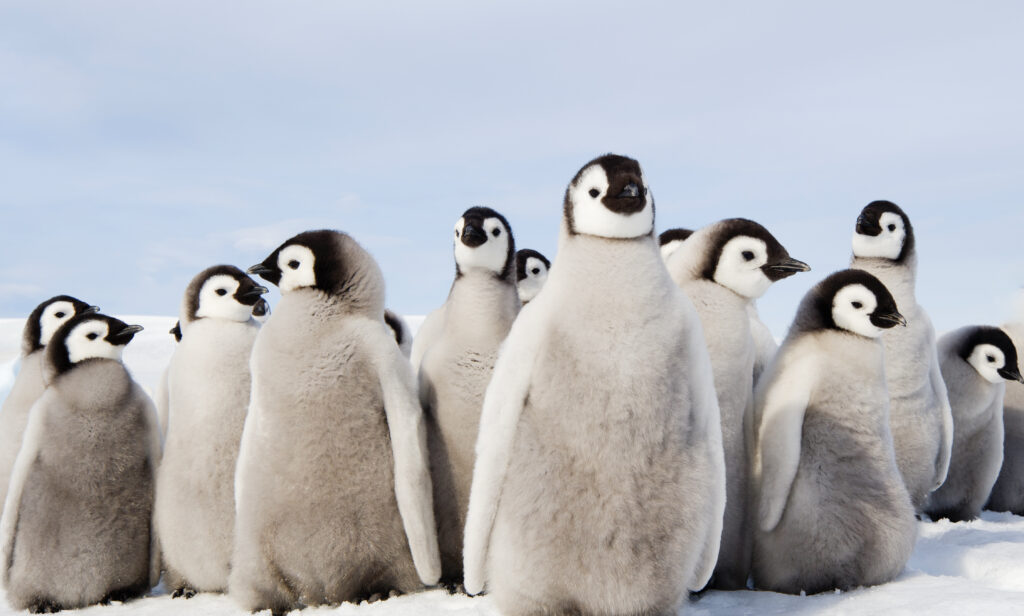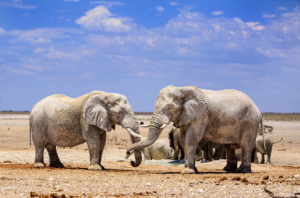
How climate change is affecting the survival of Emperor Penguins


Emma Flosi
The iconic inhabitants of Antarctica
Antarctica is the coldest, driest, windiest place on Earth. Its harsh climate sees winter temperatures as low as -60 degrees Celsius (-76 degrees Fahrenheit). These extreme temperatures, however, do not make it immune to the effects of a warming planet. In fact, this frozen world is home to thousands of researchers dedicated to better understanding climate change and its effects on the animals that call this place home.
Let’s focus on one of Antarctica’s most iconic inhabitants: the emperor penguins. In August of 2021, the U.S. Fish and Wildlife Service proposed to list the emperor penguin as a threatened species under the Endangered Species Act of 1973. A threatened species is defined as one that is “likely to become an endangered species within the foreseeable future throughout all or a significant portion of its range.” This proposal came after decades of research on emperor penguin populations and the projected changes in sea ice.
The Breeding Season
Emperor penguins breed during the austral winter on land-fast sea ice, which is stable sea ice-locked to the coast, ice shelves, or islands. During the non-breeding season, penguins use the sea ice as a platform to rest and molt (shed old feathers and prepare for the growth of new ones). Pack ice is also the site where they forage for food to feed both themselves and their offspring. Emperor penguins’ prey also shifts with the sea ice. In other words, strong annual sea ice is essential to the survival of emperor penguin colonies. The warmer the global temperature, the less stable the ice. With melting and/or early fast sea ice breakup can jeopardize the survival of chicks, breeding grounds, and food supply.
As of 2020, there are 61 emperor penguin breeding colonies in existence. The global population of breeding pairs is approximately 270,000-280,000 and an estimated 625,000-650,000 individual penguins.
After analyzing projected increases in global temperature, researchers have formulated 4 potential climate scenarios and the subsequent fate of emperor penguin populations.
The number above each graph is the increase in temperature above pre-industrial levels. The total population is in terms of breeding pairs. Projections were categorized into a low-emissions scenario (which is the Paris Agreement goal), moderate-emissions scenario, and high-emissions scenario.
In the low-emissions scenario, the global population of emperor penguins is projected to decline by 27% by 2050.
In the moderate emissions scenario, the global population of emperor penguins is projected to decline by 33% by 2050.
In the high-emissions scenario, the global population of emperor penguins is projected to decline by 47% by 2050.
The great threat of climate change
What does this mean, and why is it important? The biggest threat to the emperor penguin population is climate change. If our planet continues to warm up, it will detrimentally change the sea-ice and destroy the penguins’ habitat. Without the ice, they cannot continue to successfully reproduce, feed, and thrive. These long-term projections are important because we are in a period of time in which our actions can change the future and reroute its course. We can save the emperor penguin population by doing our part to reduce greenhouse gas emissions. Human choices will be the deciding factor. Changes in technology, population, and economic development will ultimately determine emission levels, which will then determine the impact on the emperor penguin population.
3 easy ways that you can help lower greenhouse gas emissions:
- Adjust your thermostat: down 3 degrees Fahrenheit in the winter, up 3 degrees Fahrenheit in the summer.
- Use energy-saving light bulbs. Replace incandescent bulbs with LED lights.
- Drive less. Ride your bike or walk as much as you can.
To learn more:
Emperor Penguins
Resources:
https://www.federalregister.gov/documents/2021/08/04/2021-15949/endangered-and-threatened-wildlife-
and-plants-threatened-species-status-with-section-4d-rule-for https://onlinelibrary.wiley.com/doi/10.1111/gcb.15806
Photo: https://www.cnn.com/2019/04/25/weather/penguins-antarctic-halley-scn-scli-intl/index.html
Disclaimer: The opinions, beliefs and viewpoints expressed by the various authors and forum participants on this web site are their own and do not necessarily reflect the opinions, beliefs and viewpoints of SAFE Worldwide.





